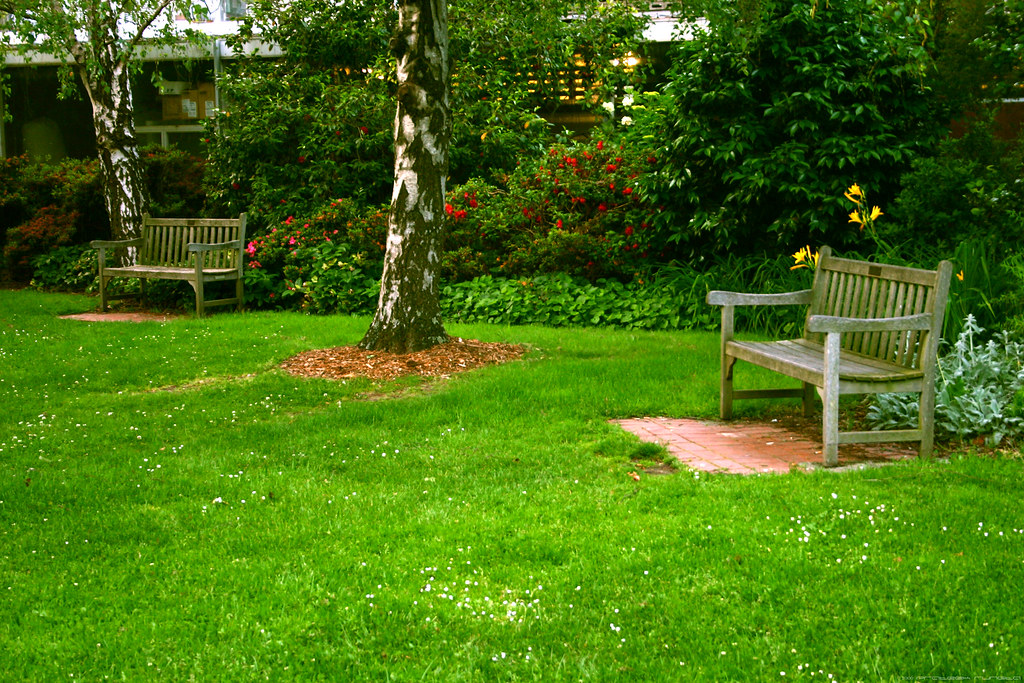The Best Time of Year for Lawn Renovation: Timing Matters!

Reviving your lawn is no small task, but with the right timing, you can transform it into a lush and vibrant oasis. That’s right – when it comes to lawn renovation, timing truly matters! Whether you’re dealing with patches of bare soil or an overall lackluster appearance, knowing when to take action can make all the difference in achieving that picture-perfect lawn you’ve always dreamed of.
In this blog post, we’ll explore why timing plays a crucial role in lawn renovation and reveal the best time of year to breathe new life into your outdoor space. So grab your gardening gloves and let’s get started on revitalizing your turf!
Why timing matters for lawn renovation?
When it comes to lawn renovation, timing is everything. The right time can mean the difference between a lush, green lawn and a patchy, brown mess. So why does timing matter so much? Let’s take a closer look.
First and foremost, timing is crucial because it determines how well your grass will establish itself after renovation. If you choose the wrong time of year, your new grass may struggle to grow and thrive in harsh weather conditions or be more susceptible to diseases and pests.
Choosing the right time allows you to work with nature rather than against it. Certain seasons provide optimal growing conditions for different types of grasses. By renovating during these periods, you give your lawn the best chance for success.
In addition to favorable growing conditions, timing also affects other factors such as weed control and soil preparation. For example, if you renovate your lawn too early in spring when weeds are still dormant or late in fall when the ground is already frozen, your efforts may be wasted.
So when is the best time to renovate your lawn? Generally speaking, early fall or spring are ideal times depending on where you live. These seasons offer cooler temperatures and ample rainfall which promote healthy growth.
On the other hand, there are definitely times that should be avoided for lawn renovation. During extreme heatwaves of summer or freezing winter temperatures are not suitable as they can stress both existing and newly planted grass.
Before embarking on any renovations though there are some important steps to prepare your lawn properly:
1) Start by evaluating what needs improvement – whether it’s thinning areas or weed infestations.
2) Remove any debris like fallen leaves or dead vegetation.
3) Test soil pH levels – this will help determine if any amendments need to be made before planting new seeds.
4) Aerate compacted soil – this allows air circulation and improves water absorption.
5) Consider overseeding or topdressing to fill in any bare patches or improve the overall
The best time of year to renovate your lawn
When it comes to renovating your lawn, timing is crucial. Choosing the right time of year can make all the difference in achieving a healthy and vibrant lawn.
So, what is the best time of year to undertake this project? Generally, early fall and spring are considered to be the optimal seasons for lawn renovation. During these times, the weather tends to be milder, providing ideal conditions for grass growth and establishment.
In early fall, cooler temperatures combined with sufficient rainfall create an environment that promotes strong root development. This sets your lawn up for success as it prepares to endure harsh winter conditions. Similarly, spring brings warmer temperatures and increased sunlight which encourages rapid germination and growth.
On the other hand, summer is usually not recommended for major lawn renovations due to high heat and drought stress. It can be challenging for new grass seed or sod to establish themselves during this period.
By choosing the right time of year based on your region’s climate patterns, you give your newly renovated lawn its best chance at thriving. So take advantage of nature’s cycles and plan your renovation accordingly!
The worst time of year to renovate your lawn
The worst time of year to renovate your lawn is during the hot summer months. While it may seem tempting to tackle this project when you have more free time or the weather is nice, it can actually do more harm than good.
During the summer, the scorching heat and lack of rainfall make it difficult for newly planted grass seeds to germinate and establish strong roots. The high temperatures also increase stress on existing grass, making it more susceptible to damage and disease.
Additionally, weeds thrive in warm weather, so attempting a lawn renovation during this time can lead to an infestation that will be challenging to control. Weeds compete with new grass for nutrients and water, hindering its growth and establishment.
Instead of renovating your lawn in the summer, opt for cooler seasons like spring or fall. These times provide optimal growing conditions for grass seeds and give them a chance to develop into a healthy turf before facing extreme temperature fluctuations.
By avoiding renovation during the worst time of year, you’ll ensure better success with your lawn’s transformation while minimizing potential setbacks.
How to prepare your lawn for renovation
Preparing your lawn for renovation is a crucial step in ensuring successful results. Before you begin the process, it’s important to assess the current condition of your lawn and identify any specific issues that need to be addressed. Here are some steps you can take to prepare your lawn for renovation:
1. Clear the area: Start by removing any debris, such as rocks, sticks, or leaves, from the surface of your lawn. This will provide a clean slate for the renovation process.
2. Weed control: It’s essential to tackle any existing weed problems before renovating your lawn. Use an appropriate herbicide or manual weeding methods to eliminate weeds and prevent them from reoccurring during the renovation.
3. Soil testing: Conduct a soil test to determine its pH level and nutrient content. This will help you understand what amendments may be necessary for optimal growth after renovation.
4. Aeration: If your soil is compacted, consider aerating it before beginning renovations. Aeration helps improve airflow, water absorption, and nutrient penetration into the root zone.
5. Overseeding: Depending on how sparse your grass is, overseeding might be beneficial during preparation for lawn renovation. Choose high-quality grass seed suitable for your region and follow proper seeding techniques.
By taking these steps before starting the actual renovation process, you’ll create an ideal foundation for new growth and ensure long-term success with your renovated lawn project!
Lawn renovation tips
Lawn renovation can be a challenging task, but with the right tips and techniques, you can achieve a healthy and lush lawn. Here are some lawn renovation tips to help you get started.
1. Start by assessing your lawn: Take a close look at your lawn and identify any problem areas. Is it plagued by weeds or bare patches? Understanding the specific issues will allow you to tailor your renovation efforts accordingly.
2. Remove weeds and thatch: Before renovating, it’s important to eliminate any existing weeds or excessive thatch buildup. This can be done through regular mowing, raking, or using specialized herbicides if necessary.
3. Aerate the soil: Compacted soil restricts root growth and nutrient absorption. By aerating your lawn, you create small holes in the soil which allow air, water, and nutrients to reach grassroots more effectively.
4. Overseed for thickening: If your lawn has bare spots or thinning areas after aerating, overseeding is essential for promoting new grass growth. Choose a quality seed mix suitable for your climate and follow proper seeding techniques for best results.
5. Feed your lawn: After overseeding or during the growing season, it’s crucial to provide adequate nutrition to promote healthy turf growth. Use a balanced fertilizer tailored specifically for lawns and apply according to package instructions.
6. Water appropriately: Proper watering plays a key role in successful lawn renovation. Water deeply but infrequently – this encourages deep root growth while minimizing weed germination.
7. Maintain regular care routine: Finally, Regular maintenance such as mowing at an appropriate height (never remove more than one-third of grass blade length), implementing good weed control practices,and providing consistent irrigation will help ensure long-term success of your renovated lawn!
Remember that each step requires careful consideration based on individual conditions so always consult with local experts when needed!
Conclusion
Timing is crucial when it comes to lawn renovation. By understanding the best time of year for this task, you can maximize your chances of success and achieve a beautiful, lush lawn.
Spring and fall are generally considered the best seasons for renovating your lawn. During these times, the weather conditions are favorable, allowing grass seeds to germinate and establish strong roots. Additionally, weeds are less active during these seasons, giving newly planted grass a better chance to thrive.
On the other hand, summer is typically not ideal for lawn renovation due to its hot temperatures and lack of moisture. This season can make it challenging for new grass seedlings to survive without constant watering and maintenance.
Before embarking on your lawn renovation project, be sure to prepare your yard properly. Clear any debris or existing weeds from the area and perform necessary soil tests to determine if any amendments are needed. Aerate compacted soil to improve water penetration and root development.
During the actual renovation process, follow some key tips for success:
1. Choose the right grass variety suited for your region’s climate and sunlight conditions.
2. Prepare the seedbed by loosening the topsoil with a rake or garden tiller.
3. Apply high-quality grass seed evenly over the entire area.
4. Keep newly seeded areas consistently moist until germination occurs.
5. Avoid foot traffic on newly seeded areas until they have established strong roots.
6 Monitor progress regularly and adjust watering frequency as needed.
By following these guidelines tailored around timing considerations along with proper preparation techniques during landscaping ventures will help ensure successful results in rejuvenating an unhealthy yard into a vibrant green oasis that you can enjoy throughout every season!
Remember: Timing matters! So plan accordingly based on seasonal cues when considering renovating your precious patch of turf!







